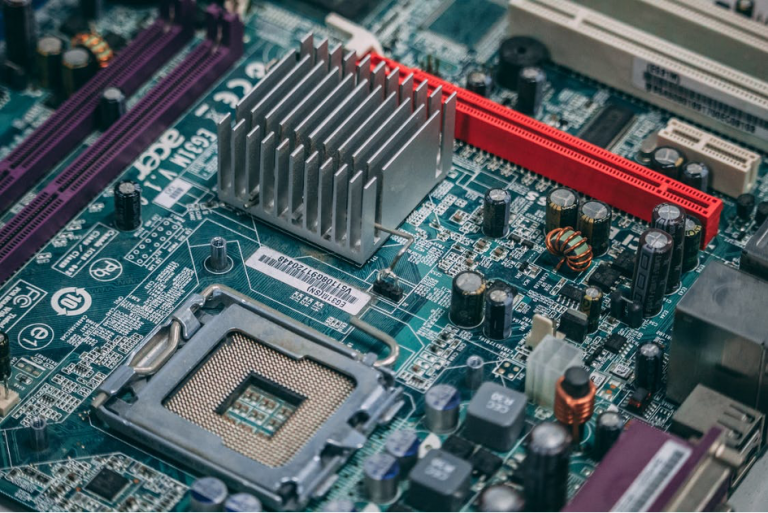
China Monitor is our brand-new program that analyses China’s economic and foreign policies. It also aims to predict the consequences of Beijing’s policy for the global economy, the EU as well as Central and Eastern European countries such as Poland.
Date: 13 November 2020
Author: Paweł Paszak
Chinese Ambitions in the Semiconductor Industry
If a single branch of technology had to be identified as a decisive one for the future of the great power competition between China and the USA, it would certainly be semiconductors. They are the foundation for the development of digital economies and other key technologies such as artificial intelligence, 5G, 6G and quantum computers. As society’s digitalization processes advance and the “Internet of Things” develops, microprocessors will become the basis for the functioning of individuals and entire branches of the economy. Achieving long-term development goals, adopted during the October meeting of the Central Committee of the CCP (October 26-29), will require the creation of a strong microprocessor sector, independent of foreign technologies. The United States will seek to use its significant advantage in this area (50% market share) to slow down and limit Chinese progress. Between 2020 and 2030 both sides are expected to maximize their efforts to achieve a strategic advantage in this matter.

According to Deloitte’s calculations, the broadly defined global semiconductor industry generated USD 515 billion in revenues in 2019, nearly USD 170 billion more than in 2016 (USD 345.85 billion). The industry’s main driving force are the rapidly growing economies of Asia-Pacific, which account for about 76% of the world market, and key links in the ICT (Information and Communication Technology) sector production chains. In 2019, China alone purchased processors with a total value of USD 304 billion, which is USD 66 billion more than the funds allocated for oil (USD 238 billion).
Despite the huge demand for this technology, the Chinese semiconductor industry is still crawling and is clearly behind its rivals in the USA, Taiwan, South Korea, Japan and Europe. According to calculations by the Semiconductor Industry Association (SIA), Chinese manufacturers account for 5% of the global and 16% of the domestic market and include mainly simple microchips. The difficulties of Chinese companies result from the fact that, unlike less advanced industrial sectors, the production of microprocessors is based on extremely intensive use of capital and knowledge, while requiring a mature technological and business ecosystem. Furthermore, new companies have to deal with corporations that have significant advantages in terms of market entry, economies of scale, brand recognition and patented quality.
This is compounded by the political and strategic difficulties of the increasing intensity of rivalry with the USA in addition to the consistently worsening image of China in developed countries. China’s growing economic and technological power is increasingly perceived by decision-makers and the public as a threat and challenge to economic, political and military security. This leads to restrictions on free technology transfers and investment flows between democratic countries and China, which is most evident in the actions of the Donald Trump administration.
The Chinese authorities are responding to the worsening international environment through a number of programs and policies that foster the development of the domestic semiconductor sector. In June 2014, the State Council of the PRC published the “Guideline for the Promotion of the Development of the National Integrated Circuit Industry” (国家集成电路产业发展推进纲要), which has raised USD 150 billion in investment, demonstrating the importance that the Chinese authorities attach to this issue. The aim of the strategy was to create and support “national champions” capable of competing with Western corporations. Entrusting control over investments to specialists with experience in the sector is supposed to prevent a massive waste of funds on projects without any real chance of success.
Support Us
If content prepared by Warsaw Institute team is useful for you, please support our actions. Donations from private persons are necessary for the continuation of our mission.
The second support tool for the industry are tax reliefs and exemptions for enterprises producing advanced microprocessors. For instance, SMIC – currently the largest semiconductor manufacturer in China – owes its position to, among others, 10-years tax exemptions and cheap loans from state banks. The effectiveness of these mechanisms has led the Chinese authorities to expand them to other promising companies. On August 4, 2020, the State Council of the PRC issued a document titled “Several Policies to Promote the High-Quality Development of the Integrated Circuit Industry and Software Industry in the New Era” (新时期促进集成电路产业和软件产业高质量发展的若干政策). With regard to manufacturers of chips that have at least 28nm (the smaller the better), operating for at least 15 years, it provides 10-years tax exemptions. In turn, the Made in China 2025 program, initiated in 2015, strongly promoted joint ventures which were expected to lead to the transfer of knowledge and know-how from foreign companies.
A major challenge will be to train specialists and engineers that will work in the emerging microprocessor manufacturing industry. So far, the focus has been on attracting talents from abroad, mainly from Taiwan, by offering extremely lucrative contracts. However, the intensification of the great power competition will hinder this strategy. Shanghai IC Industry Association estimates the current shortage of workers at 300,000, hence the attempts to create specialized courses and majors at universities in China, aimed at reducing it.
The scale and intensity of the Chinese authorities’ involvement allow to believe that this sector will become one of the key elements of the Five-Year Development Plan (2021-2025). The dominance of the USA and other developed economies (about 95% of the global market) as well as Washington’s increasingly assertive policy in this area make achieving technological self-sufficiency a strategic and developmental imperative for China. According to the consulting group’s calculations, the semiconductor market is expected to reach nearly USD 600 billion in 2022, a growing proportion of which will be chips dedicated to artificial intelligence. Without the ability to produce 3nm, 5nm and 7nm integrated circuits, China will not be able to fully exploit the potential of digitalization, artificial intelligence or 5G and 6G technologies.
All texts published by the Warsaw Institute Foundation may be disseminated on the condition that their origin is credited. Images may not be used without permission.

















